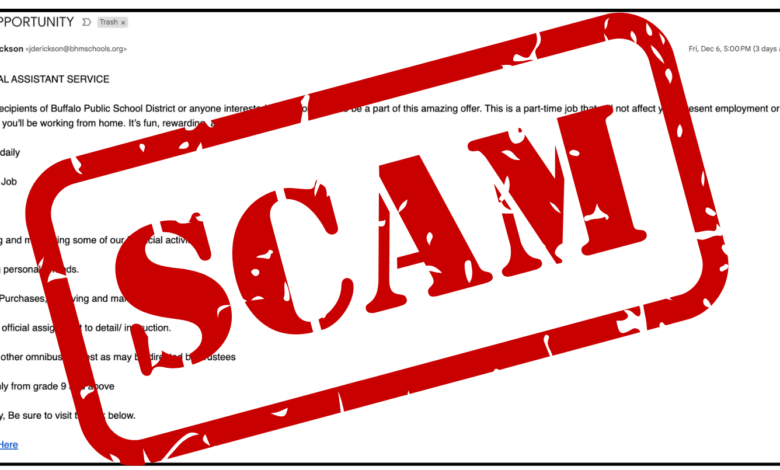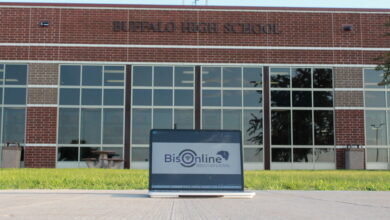
In the digital age, scams and hacking have become a common threat. One of the most frequent types of scams is phishing—fraudulent emails designed to trick recipients into providing sensitive information, such as passwords, financial details, or other personal data. These emails often appear to come from trusted sources, making it difficult to recognize them as scams. According to Paula Meister, the tech manager of the high school, phishing emails are “designed to trick people into giving up personal information or clicking on malicious links. This can lead to identity theft, financial loss, and other serious consequences.”
Early in December, a phishing incident impacted BHS. An email was sent to some staff and students from the account of Jeffery Erickson, a science teacher. The email included information about a potential job opportunity. However, Mr. Erickson did not send this email. The email was identified as a scam and dealt with promptly by BHS administration.
Meister emphasized that to help protect yourself and your accounts from being compromised by hackers, you should use different passwords for all accounts, set up multi-factor authentication, and remain vigilant about suspicious emails, avoid clicking on links or opening attachments from unknown senders, and never enter personal information, such as social security numbers or bank or credit card details, in emails, google forms, or other documents that you do not trust. By following these steps, you can significantly reduce the risk of being compromised by or being sent spam emails, and protect your data from potential harm.
Receiving a phishing email can be alarming, especially for PSEO students like Princess Hart ‘26, who often feel out of the loop regarding what’s happening at the high school.
Reflecting on getting the email, Hart shared, “It was kind of easy to differentiate a job offer from a staff member versus a spammer.” She recalled receiving a legitimate job offer from the middle school, which directed her to the official website for applications. “Anything tied to the school in terms of jobs — they’d take you to the official website, not a Google Form,” she explained. Hart also noted the red flags in the phishing email, particularly its request for bank information upfront, saying, “That wouldn’t happen with a real job offer—they’d assume you already have a bank account.”
Jeffery Erickson, the teacher whose account was hacked and used to send the phishing email, shared his feelings about the experience.
“Mostly confused and vulnerable,” he admitted. “I didn’t know what I did wrong.” Although he had been hacked before, he explained that this time felt more serious due to the scale of the breach, with over 2,000 people signing up through the fraudulent document. Erickson learned of the hack during Thanksgiving break when Principal Mischke informed him of the situation. Reflecting on the incident, he emphasized the importance of cybersecurity and vigilance.
This incident serves as a reminder of the importance of staying vigilant on the internet and with your personal information, especially within school and work environments. As students and staff have become targets, it’s crucial to recognize the warning signs of fraudulent emails and protect personal information.




